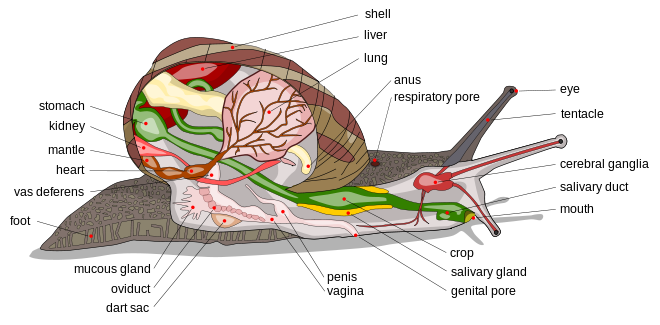Nutrition
Terrestrial snails consume organisms such as plants and decomposing organic material (Carnegie Museum of Natural History 2012). Chemoreceptors on the tentacles seek out food similarly to a nose of a human being (Carnegie Museum of Natural History 2012). When the snail comes across a food source, they use their radula to break it into smaller pieces that can make its way down to the esophagus (Carnegie Museum of Natural History 2012). Saliva, muscular contractions, and digestive juices assist with food movement and digestion which is comparable to the digestion of humans (Carnegie Museum of Natural History 2012).
Shortly after hatching from their eggs, the snail is in need of calcium to strengthen their weak shells (Snail-world 2012). The first source of calcium they usually come across is the shell they had just emerged from (Snail-world 2012).

Neohelix divesta has gained enough energy and is now able to reproduce. Let's discover how they reproduce.